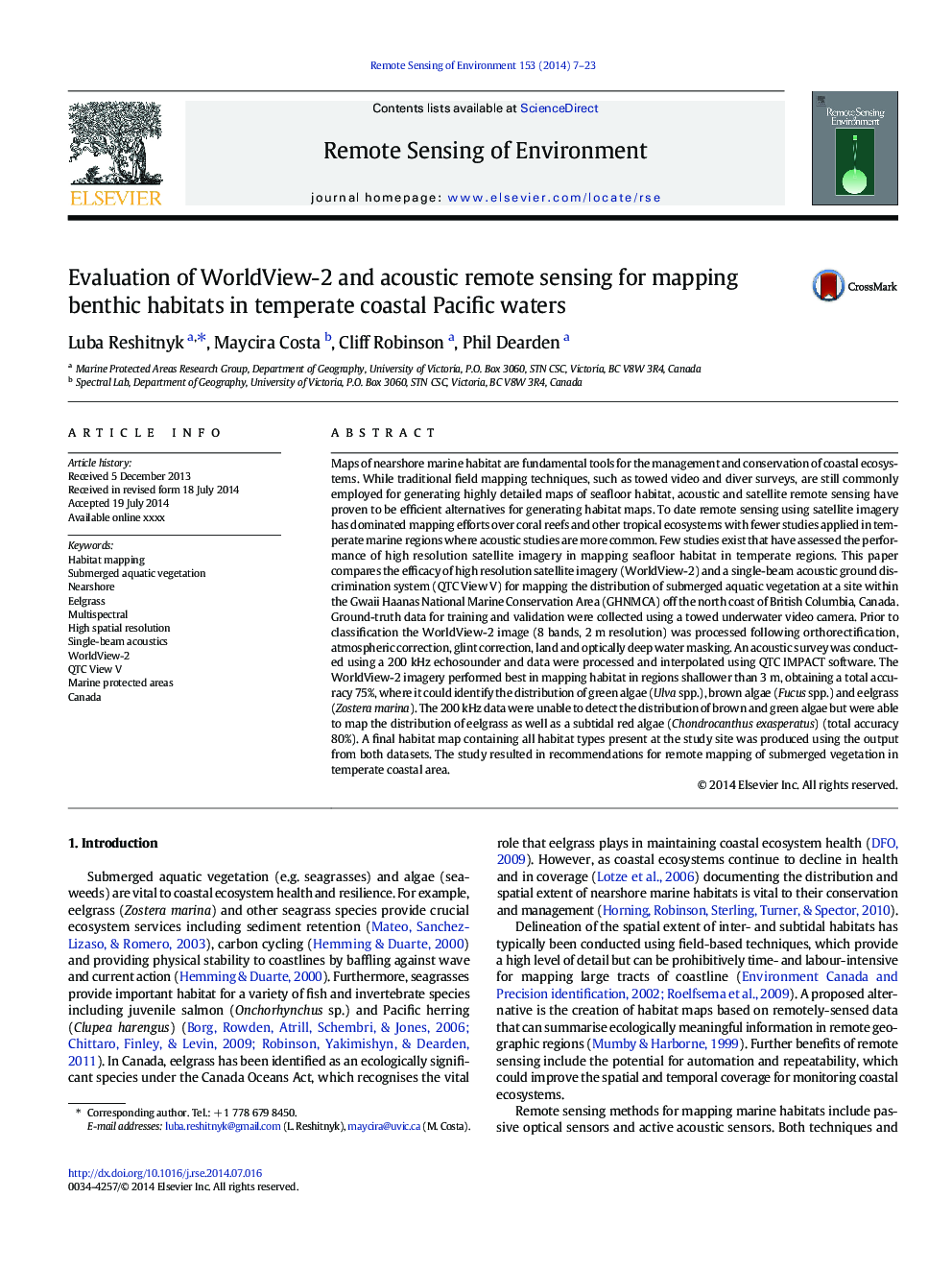| Article ID | Journal | Published Year | Pages | File Type |
|---|---|---|---|---|
| 6346290 | Remote Sensing of Environment | 2014 | 17 Pages |
Abstract
Maps of nearshore marine habitat are fundamental tools for the management and conservation of coastal ecosystems. While traditional field mapping techniques, such as towed video and diver surveys, are still commonly employed for generating highly detailed maps of seafloor habitat, acoustic and satellite remote sensing have proven to be efficient alternatives for generating habitat maps. To date remote sensing using satellite imagery has dominated mapping efforts over coral reefs and other tropical ecosystems with fewer studies applied in temperate marine regions where acoustic studies are more common. Few studies exist that have assessed the performance of high resolution satellite imagery in mapping seafloor habitat in temperate regions. This paper compares the efficacy of high resolution satellite imagery (WorldView-2) and a single-beam acoustic ground discrimination system (QTC View V) for mapping the distribution of submerged aquatic vegetation at a site within the Gwaii Haanas National Marine Conservation Area (GHNMCA) off the north coast of British Columbia, Canada. Ground-truth data for training and validation were collected using a towed underwater video camera. Prior to classification the WorldView-2 image (8 bands, 2Â m resolution) was processed following orthorectification, atmospheric correction, glint correction, land and optically deep water masking. An acoustic survey was conducted using a 200Â kHz echosounder and data were processed and interpolated using QTC IMPACT software. The WorldView-2 imagery performed best in mapping habitat in regions shallower than 3Â m, obtaining a total accuracy 75%, where it could identify the distribution of green algae (Ulva spp.), brown algae (Fucus spp.) and eelgrass (Zostera marina). The 200Â kHz data were unable to detect the distribution of brown and green algae but were able to map the distribution of eelgrass as well as a subtidal red algae (Chondrocanthus exasperatus) (total accuracy 80%). A final habitat map containing all habitat types present at the study site was produced using the output from both datasets. The study resulted in recommendations for remote mapping of submerged vegetation in temperate coastal area.
Keywords
Related Topics
Physical Sciences and Engineering
Earth and Planetary Sciences
Computers in Earth Sciences
Authors
Luba Reshitnyk, Maycira Costa, Cliff Robinson, Phil Dearden,
